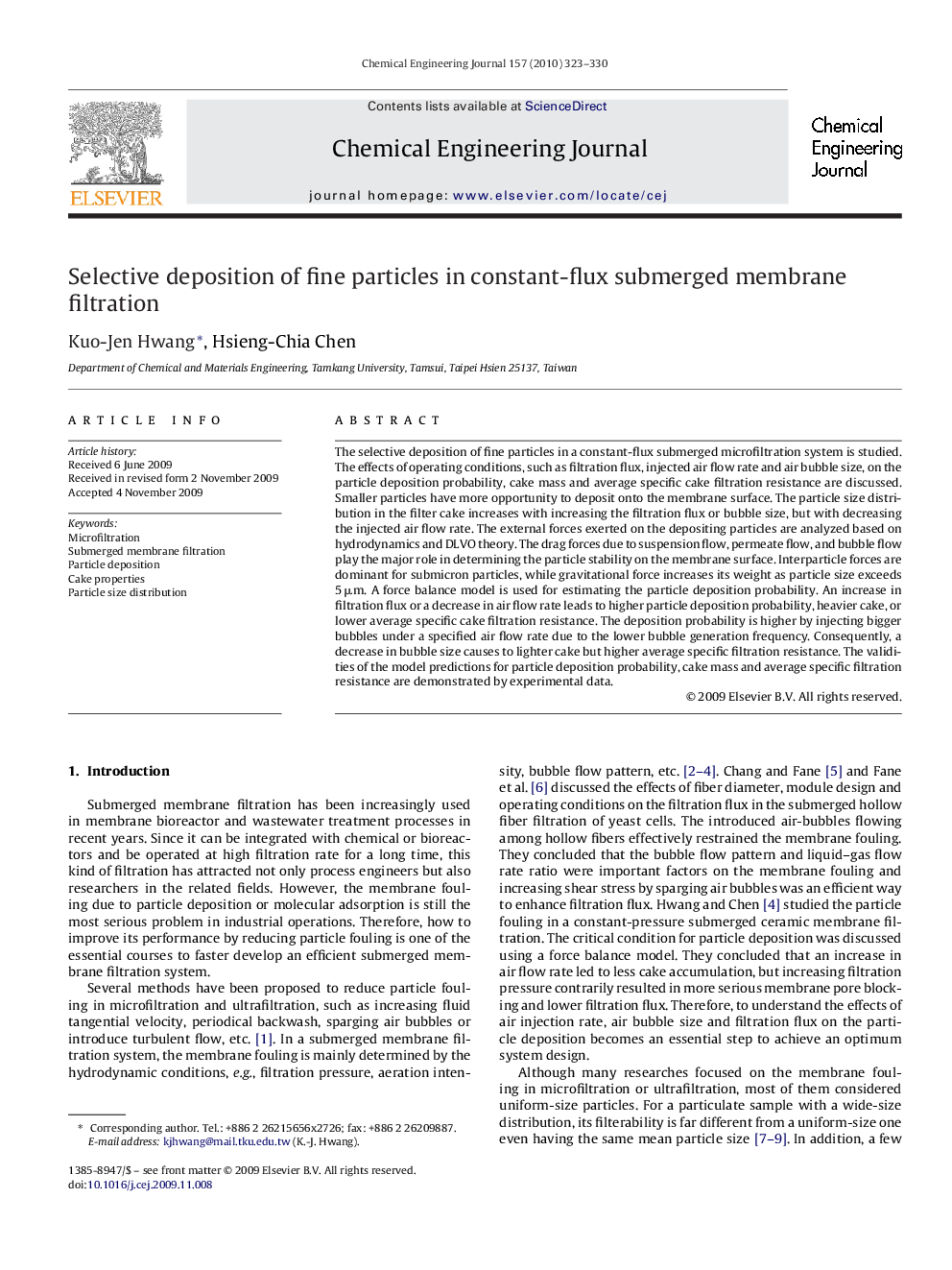| Article ID | Journal | Published Year | Pages | File Type |
|---|---|---|---|---|
| 152844 | Chemical Engineering Journal | 2010 | 8 Pages |
The selective deposition of fine particles in a constant-flux submerged microfiltration system is studied. The effects of operating conditions, such as filtration flux, injected air flow rate and air bubble size, on the particle deposition probability, cake mass and average specific cake filtration resistance are discussed. Smaller particles have more opportunity to deposit onto the membrane surface. The particle size distribution in the filter cake increases with increasing the filtration flux or bubble size, but with decreasing the injected air flow rate. The external forces exerted on the depositing particles are analyzed based on hydrodynamics and DLVO theory. The drag forces due to suspension flow, permeate flow, and bubble flow play the major role in determining the particle stability on the membrane surface. Interparticle forces are dominant for submicron particles, while gravitational force increases its weight as particle size exceeds 5 μm. A force balance model is used for estimating the particle deposition probability. An increase in filtration flux or a decrease in air flow rate leads to higher particle deposition probability, heavier cake, or lower average specific cake filtration resistance. The deposition probability is higher by injecting bigger bubbles under a specified air flow rate due to the lower bubble generation frequency. Consequently, a decrease in bubble size causes to lighter cake but higher average specific filtration resistance. The validities of the model predictions for particle deposition probability, cake mass and average specific filtration resistance are demonstrated by experimental data.
